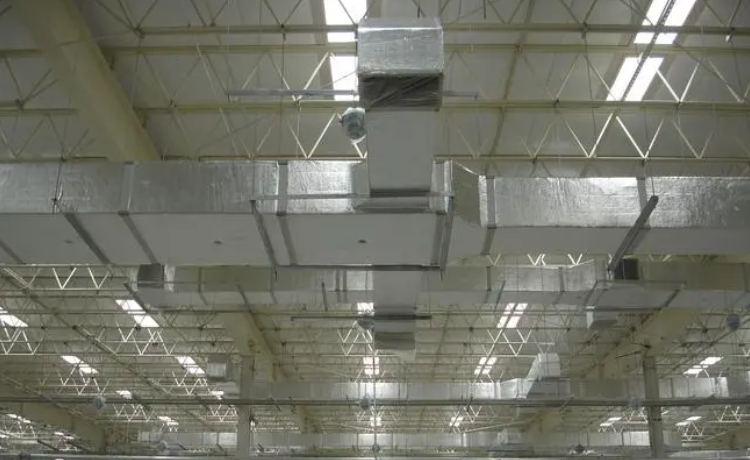

SEARCH
Thermal insulation materials not only help to save energy and improve operation efficiency of HVAC, but also effectively protect equipment. In order to ensure that its performance is fully utilized, this article will explore the details of material selection, construction and storage.

First, why does the air duct need the protection of insulation materials?
As far as HVAC is concerned, thermal insulation materials not only protect the surface, but also bring more comprehensive and comprehensive effects.
First of all, the insulation material can effectively keep the temperature of the pipe stable. Especially in winter, lower temperatures will lead to increased energy consumption of heating equipment such as heating. If the air duct lacks the correct insulation measures, it will increase the energy consumption of heating and cause a waste of resources.
Secondly, the insulation material can reduce the loss of air in the flow of the air duct and improve the operating efficiency of the air duct.
Furthermore, the correct insulation measures can reduce the impact of environmental factors (such as temperature changes, oxidation, etc.) on the air duct, thereby extending the service life of the air duct.
Therefore, the selection of high-quality insulation materials and correct installation is of great significance for maintaining the normal operation of the smoke exhaust duct and energy saving and environmental protection.
Second, the use of air duct insulation material precautions
1, choose the appropriate insulation material: should be combined with thermal conductivity, temperature resistance, fire performance and environmental protection and other comprehensive factors to consider, common insulation materials are glass wool, rock wool and so on.
2, to ensure the integrity of the insulation layer: during the construction process should ensure the continuity and integrity of the insulation layer, to avoid leakage insulation, broken insulation and other phenomena.
3. Pay attention to the construction details: try to control the flatness, cleanliness and fit of air ducts and materials during installation.
4, pay attention to storage environmental conditions: storage environment will directly affect the energy efficiency of insulation materials.
Next, we will elaborate from the three perspectives of material selection, installation and storage according to the above content.
Third, air pipe insulation materials use rules
1. Material selection
1), fire performance: Choose fire retardant materials in line with fire regulations, according to the relevant national standards, the insulation materials used by HVAC pipes should have the corresponding fire rating, generally should not be lower than B1 level. This means that the selected insulation material should have good flame retardant properties and can effectively prevent the spread of flame.
2), flame retardant performance: the flame retardant performance of thermal insulation material is an important indicator of its fire protection standards. The material should have a certain degree of self-extinguishing, that is, it can extinguish itself after encountering fire to prevent the spread of the flame.
Based on the above requirements, people usually choose glass wool, rock wool, etc., as the insulation material for air ducts. In some parts and scenes with higher fire resistance requirements, people will choose thermal insulation materials with protective layers, such as glass wool with aluminum foil.
2. Construction requirements
1) Size matching: According to the size of the smoke exhaust pipe, the insulation material is cut to ensure that it can be closely fitted to the surface of the pipe to avoid gaps.
2) Splicing treatment: Use special glue or thermal insulation tape to seal the splicing place to ensure that the thermal insulation material will not fall off or leak.
3), fixing method: The use of special insulation nails to fix the insulation material on the smoke exhaust pipe to ensure that it will not fall off due to vibration and other reasons.
4), maintain ventilation: when installing thermal insulation materials, attention should be paid to maintain smooth ventilation to avoid fire and other safety accidents caused by poor ventilation.
3. Storage conditions
1) Storage environment: Insulation materials should be stored in a dry, well-ventilated place, avoid direct sunlight and humid environment.
2) Storage time: insulation materials should be unsealed before use as far as possible to avoid long-term storage and lead to its performance decline.
3), dust and pollution prevention: in the storage process should prevent the adhesion of dust and pollutants, so as not to affect its thermal insulation effect and service life.
In summary, selecting the appropriate insulation materials and paying attention to the correct installation and storage methods are indispensable for maintaining the normal and efficient operation of the air duct.
Related